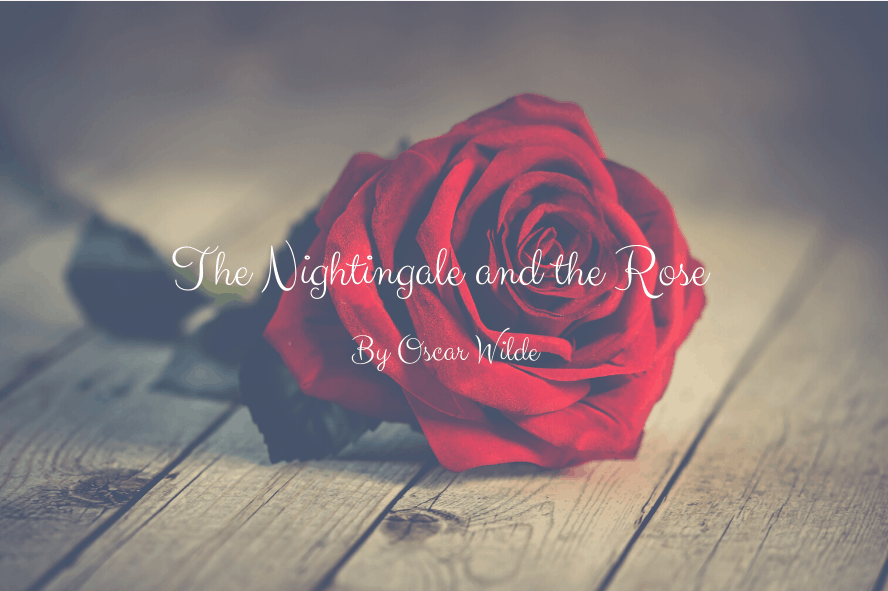“She promised she’d dance with me if I bought her a red rose,” cried a young heart-broken student. “But there’s no one in this whole garden….
These are probably the most heart-breaking and iconic lines from the famous childhood short story “The Nightingale and the Rose” by Oscar Wilde.
Almost each of us has read the story but at an early age. The main themes that Oscar Wilde wanted to demonstrate some pretty deep thoughts beyond children’s understanding. Among many philosophical and emotional issues, I have picked three of my favorite themes for you. I want to look back on the story and analyze what the famous writer wanted us to learn.
Sacrifice
Sacrifice is explored through Nightingale’s benevolence for the sake of genuine love and for helping other people.
When Nightingale saw the Student sobbing for his love, her entire hearted confidence in affection propelled her to support the boy. So she chose to support him and left her home looking for a red rose. Finally, she found the red rose, but the tree was damaged and unable to bear one. The only way was to ‘build it out of music by moonlight,’ and ‘stain it with her own heart’ s-blood,’ and she did that.
The theme is delivered in this story through the steps of Nightingale. It reveals how one life would sacrifice itself to make another happy. Rather than being selfish, we should follow the path that Oscar Wilde wanted us to realize through Nightingale’s actions.
Love
“The Nightingale and the Rose” is a story about the nature of love.
Nightingale agreed to take the red rose in exchange for the maximum cost, which was her life. She did this because she believed love is divine and random. It always cannot be expressed logically. At last, Nightingale proved it by sacrificing her life.
What is the meaning of true love? To find this out, Wilde relates and distinguishes two sorts of love. First, the story presents love, which involves a high cost: a nightingale gives her life. Therefore the Student can own a red rose, an item which he intensely wishes.
On the other hand, it presents a second sort of love between the young Girl and the Student. She asked for a red rose in return for her love. Later, when the Student got the rose, suddenly the Girl swings her mind as another admirer has given her some ornaments she prices more greatly.
By exposing the story’s characters in this way, the writer clarifies that true love contains countless sacrifices. If love is constructed based on wealth or belongings, it is not true at all. In the story, the only ‘True Lover’ was the Nightingale. She was the only one with sincere feelings, and for those feelings, she was prepared to sacrifice her life. Even though she knew she would not gain anything in return. The fact was only Love to her. She was doing it for her love and that she was making her beloved happy it was enough for her. This is how love should be. We can have explicit learning from the bird how we should act for our loved ones.
Materialism
“The Nightingale and the Rose” ties-up the Student’s extreme-rationality to the Girl’s materialism. Since he realizes the world merely in terms of “realism,” the Student can’t come out with a sense of unselfish behavior. It does not make any value for the person or the bird by practicing it.
Considerably, the Girl is the most self-seeking as well as a possessive character in the story. The consequence is that rationality certainly creates materialism if it is not fortified with emotion. Her logic for refusing the Student’s red rose: “Everyone knows that jewels price is far more than flowers.”
The only feelings the Student had for the Girl are material love since he was only impressed by her beauty. Hence, when the Girl denied him, he threw the rose and returned to his study, realizing love is nothing but impractical. Since he didn’t appreciate the true love of Nightingale, in return, he also got nothing. Love is such a pure feeling that it cannot be explained or deal with materialism and beauty.
Let’s look back to the fantastic story once again!


















